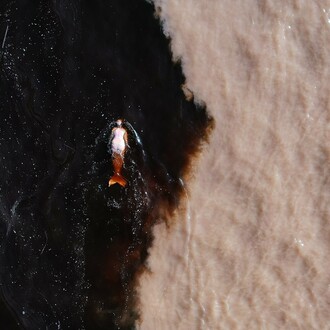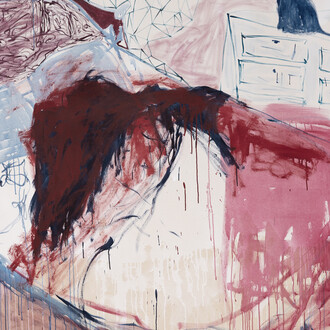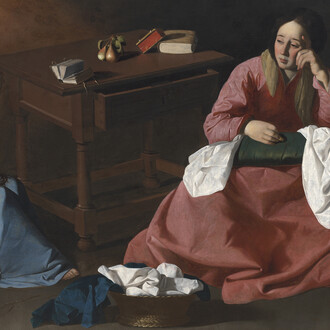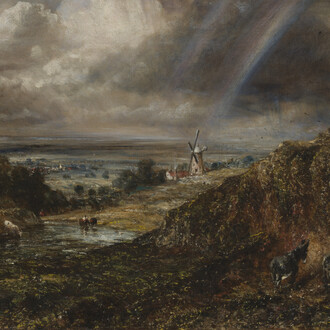Niki de Saint Phalle (1930 – 2002) and Jean Tinguely (1925 – 1991) are reunited in a major site-wide takeover at Hauser & Wirth Somerset in collaboration with the Niki Charitable Art Foundation. The first exhibition dedicated to both artists in the UK illustrates Saint Phalle and Tinguely’s visionary artistic output and enduring creative collaboration over three decades.
The exhibition takes place as part of the centenary celebrations of Tinguely’s birth. To mark this occasion, his innovative and playful oeuvre will be honored internationally with a range of exhibitions and events.
Two emblematic figures of contemporary art, Saint Phalle and Tinguely defied conventional artmaking and were fuelled with rebellion, in both life and art. The exhibition features unseen works on paper and art décor by Saint Phalle, alongside her Shooting Paintings and monumental open-air sculptures. Iconic kinetic machines by Tinguely range from the 1950s to the final year of his life, in addition to multifaceted collaborative works made by the duo throughout the 1980s.
The Bourgeois Gallery introduces the artists’ distinct visual language, production methods and social commentary that developed in parallel, and through collaboration, over the course of their careers. The Tinguely works within this space are exemplary of his sculptural practice as research, exploring art based on movement, chance, relative speed and sound. His ‘anti-machines’ feel more relevant now than ever before, constructed from scrap metal and an assemblage of found materials, designed to highlight the flaws of modern technology and society’s displacement of humanity.
Overlooking these works stands Saint Phalle’s Big lady (black) (1968/1995). By 1965, Saint Phalle began to introduce polyester to create more voluptuous dancing figures that could be displayed in public parks and other outdoor locations, as seen in Les trois graces (1995 – 2003) that is presented in the farmyard in Somerset.
The Rhoades Gallery features Saint Phalle’s first functional sculptures, made for the film Un reve plus long que la nuit (1976). The film was written, directed and acted by Saint Phalle, alongside Tinguely and her daughter Laura Duke. Art and life were interchangeable in Saint Phalle’s universe and the decorative elements for the film, such as thrones, tables and mirrors, instigated a sustained interest in making art to be lived with, which resulted in larger-scale immersive projects. It was Saint Phalle’s passion for fantasy and mythology that contributed to Tinguely’s monumental sculptural work, Le cyclop (1969 – 1994), in the forest of Milly-la-Forêt, France, a project of boundless action between artists and a dream of utopia.
A mutual source of inspiration can be seen in Le grande tête (1988), a union of Tinguely’s robust mechanical base with Saint Phalle’s mysterious abstract face as a silent observer, a motif she began developing from the 1970s, in response to multiple realities and dream states that can exist simultaneously. Skating amongst the gold furniture is Patineuse (c. 1967), from her most famous and recognizable series, the Nanas. Saint Phalle’s army of brightly colored Nanas interrogate the various roles of women, often liberated from tradition and radiating energy and vitality.
The Pigsty Gallery pays homage to Saint Phalle’s Shooting paintings, which began in 1961 against a backdrop of political violence and unrest in France. Saint Phalle fired a rifle at canvases or low reliefs resembling alters or effigies, often exploding bags of hidden paint across the work’s surface. The process of creation was a paradoxical destructive act, utilizing sensations of violence and demolition to promote a sense of renewal and catharsis for the artist and the viewer.
The performative action was both inward-looking, demonstrating Saint Phalle’s regaining of control and strength over a strict Catholic upbringing and abusive father but, at the same time, responding to the period in which they were made, and bursting with rage at institutional forces and masculinist values. Tinguely was a primary supporter of these works and his own auto-exploding sculptures and incendiarism in art shared this adventurous spirit and eagerness to challenge artistic norms.
The Workshop Gallery presents an intimate collection of drawings and works on paper by Saint Phalle, many of which reflect on her relationship with Tinguely and the creative stability and trust they provided for one another. The repetition of birds, snakes, dragons and mythical creatures appear frequently in Saint Phalle’s writings and sculptural work, drawing from the symbolic language of African, preColumbian and eastern cultures. Birds are often believed to be messengers from one world to the next, representing complete freedom and immortal reinvention.
In addition to independent works by Tinguely, including Radio sculpture (1961), IBM (1960) and Rocker III (1963), stands a final collaborative work, Pallas Athéna (le chariot) (1989) that relates to the seventh card in the Tarot which appears in Saint Phalle’s Tarot garden in Garavicchio, Italy.
Saint Phalle’s extraordinary combination of architecture, the enchantment of nature, and the spiritual world is integral throughout her practice, most notably in her ambitious vision for the Tarot garden. This is prominent across the open-air presentation in Somerset, including The prophet (1990), Tête de mort I (1988), Le poète et sa muse (1999) and Les trois graces (1995-2003), alongside Tinguely’s Fountain III (1963), a large motor-driven fountain on display in the Rhoades Gallery lobby that will be activated throughout the summer.












